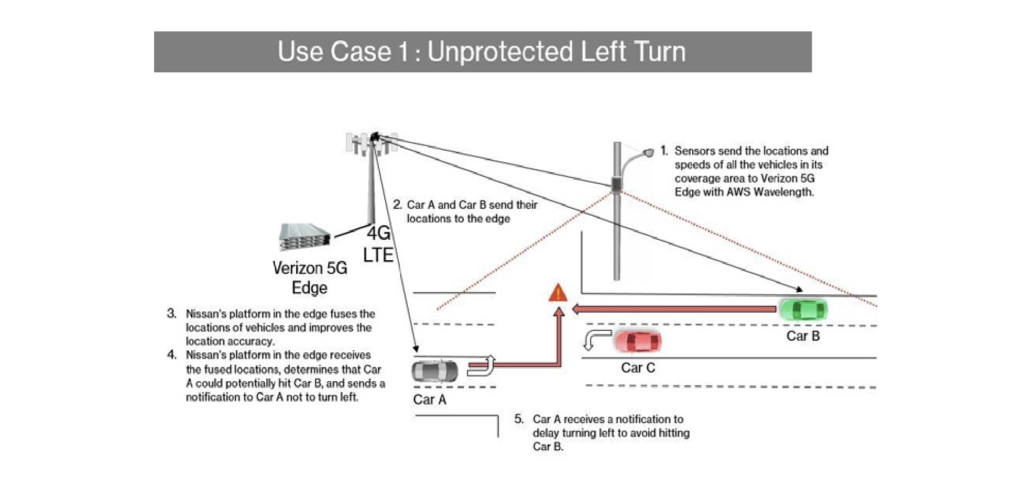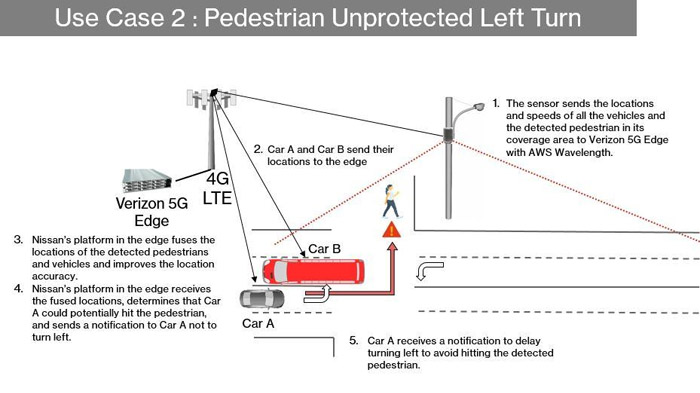Telecommunications specialist Verizon and Nissan North America’s Research and Advanced Engineering team say they have completed a research proof of concept demonstrating how sensor data from vehicles and surrounding infrastructure can be processed at the edge of Verizon’s wireless network. This data can then be communicated back to vehicles for urgent driver notifications in near real time.
The test successfully applied this C-V2X process to several scenarios such as identifying vulnerable pedestrians and detecting oncoming traffic emerging from behind visual obstructions. Following on from the demonstration, the Contra Costa Transportation Authority (CCTA) in California will initiate validation of the technology for its Automated Driving Systems Grant Program, which will test the use case in controlled public environments in Contra Costa County before potential live deployment upon validation.
“Communication between vehicles and the environment around them, or C-V2X, will be one of the most important transportation innovations of the connected and autonomous future of driving,” said TJ Fox, SVP of Industrial IoT and automotive at Verizon Business. “This proof of concept shows that edge computing with Verizon’s cellular network can help take the resource-intensive compute burden off vehicles and public infrastructure – housing their software platforms and crunching their sensor data for them – and can communicate data outward to prompt potentially lifesaving safety alerts or autonomous driving features in the car, all essentially in real time.”
The trials focused on testing a variety of vehicle-based and infrastructure-based sensor configurations to create a multi-viewpoint picture of potential safety hazards beyond vehicle and driver line-of-sight. Using Verizon 5G Edge with AWS Wavelength, the sensor data from Nissan vehicles and infrastructure was processed at the edge of Verizon’s wireless network and communicated back via the cellular network to vehicles in near real time, prompting Nissan’s Intelligent Shared World platform to initiate driver notifications. The trial was conducted by Nissan’s Silicon Valley-based research and advanced engineering team.



